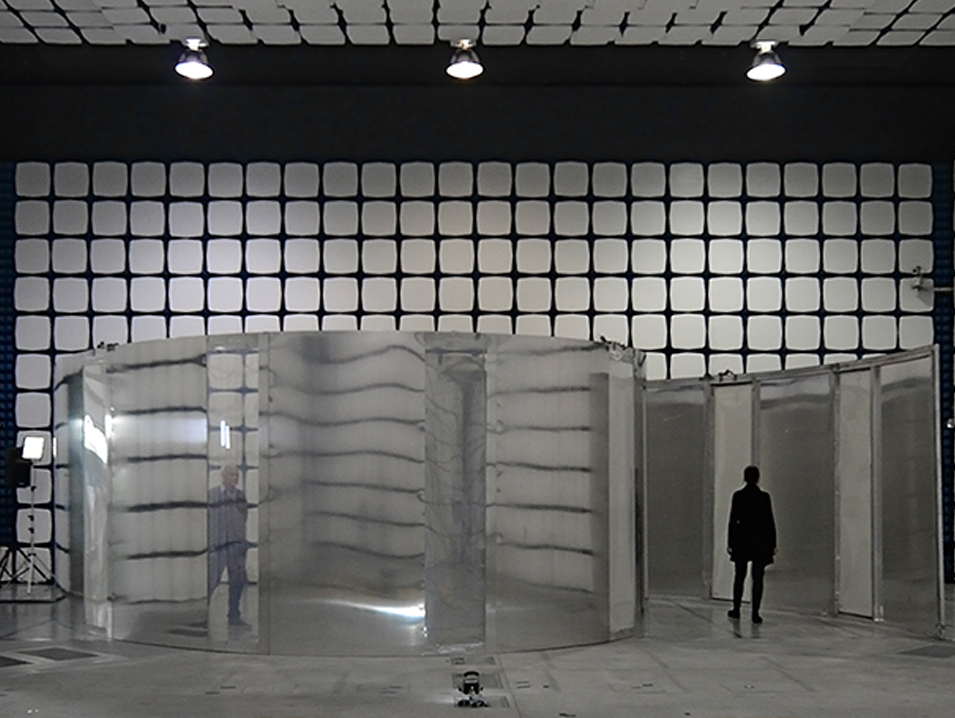Resonances III – DATAMI
SciArt project in collaboration with the European Commission
Opening 14.10.2019
14.10.-11.11.2019
Joint Research Center, Ispra, Italy
@Joint Research Center
Nature of Knowledge – The Uncertain Structure
Collaboration between Jenny Brockmann (Visual Arts), Pierre Pegon (Engineering), Diana Rembges (Biology), and Marcelo Masera (Electrical Engineering, Risk Management)
The future consequences of climate change depend on the quantity of greenhouse gases we release into the atmosphere, triggered by increasing temperatures, and humanity’s response to its knowledge of the potential consequences of climate change. All of these factors are uncertain. The amount of greenhouse gases still being released depends, among other things, on human behavior, technological developments, and population growth. Uncertainty about the resulting temperature increases as a result of many types of feedback from the climate system. Some consequences of these increasing temperatures are predictable, but surprises are virtually guaranteed. This is especially true given the uncertain conditions, and their complex relationships with humanity’s other environmental impacts, as well as humankind’s generally unpredictable strategies for adapting to climate change.
The uncertainty of the forecast, regarding when the point of irreversible transformation has been reached, is one of the topics of this project, as is uncertainty in the process of knowledge production and transfer.
In real time, the installation SciArt Experiment transfers data generated by an experiment at JRC dealing with climate change consequences, to a spatial installation in the shape of a spiral, at the exhibition site VELA9 and BOZAR. A structure corresponding to the test structure at the ELSA lab of JRC is built at a remote site, and put under increasing stress throughout the duration of the exhibition. The structure at JRC becomes more and more strained under the deforming pressure of hydraulic devices used at ELSA for simulating geological movements and states of the atmosphere. At a certain point in time, the structure will have become permanently disfigured. During this process, the spatial installation at the exhibition site is connected in real time with the data of the experiment, and transforms in time according to data (created by the smart energy of the deforming structure). Specific factors in the exhibition hall (deliberate or not, e.g. how people move through the space, or physical data like temperature and pressure) lead to the creation of certain variables in the experiment. These add a random element to the overall uncertainty of the project, while creating an integrated communication, opening a social channel of interaction between the observers and the element under test (e.g. a reference to the people’s belief on the rate of climate change).
The uncertainty provides contrast to the expected evolution of the experiment. Influenced by previous data, experiments, or models, anticipation arises regarding the duration of the experiment and the moment when the structure becomes irreversibly deformed. This additional variable evolves throughout the experiment. The life expectancy of the experiment is updated continuously, according to measurements and updates of knowledge. This enhances the dichotomy between what we know about the ongoing phenomena, and the anticipation of what might happen, while affecting our „memory“: our understanding of what has happened up until that moment.
